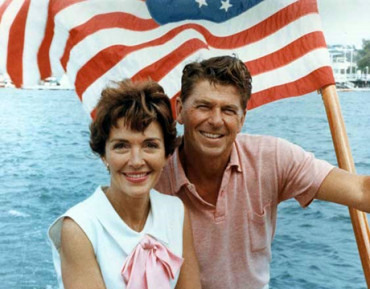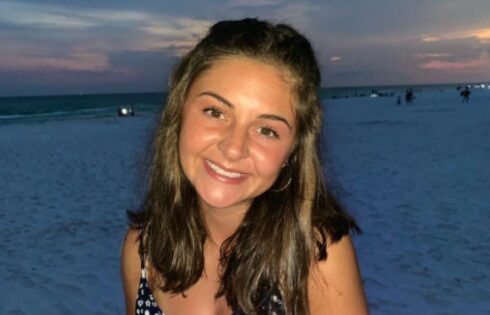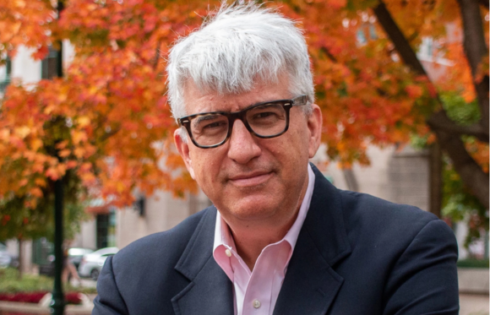
CHICAGO — The University of Chicago’s new Hospital Pavilion is a $700 million, 10-story behemoth of a building that looms over the intersection of East 57th and Maryland.
“That thing is monstrous!” exclaimed one passerby upon seeing the Pavilion, which, set to open in 2013, currently consists of neatly placed iron beams, Tyvek commercial wrap, lustrous silver paneling, and glass windows that seem to have been shined and re-shined so much that they reflect a very clear image of something not quite as imposing—a decrepit old apartment building across the street.
This vacant tan brick relic—three stories high with boarded-up windows—is no match for the medical complex that towers above. Indeed, it would be just another inconsequential piece of Chicago real estate were it not for one of the building’s former residents: Ronald Reagan.
The president-to-be and his family moved to the first-floor apartment at 832 East 57th Street almost a century ago, when Reagan was just two years old. His father, Jack, held a job as a clerk in Marshall Field’s department store. But after a year, the combination of low pay and his notorious drinking habits took its toll on the family, prompting them to vagrantly drift through the bucolic Illinois towns of Galesburg, Monmouth, and Tampico, before finally settling in Dixon.
Today, having purchased the property and moved out its residents, the University of Chicago could soon demolish what was, until the election of Barack Obama, the only Chicago residence where a president has lived. The property would become part of the hospital expansion, which includes the William Eckhardt Research Center and a new child care center. It’s the architectural spin-off of David vs. Goliath, set in the Windy City, with the school that gave the world “Reaganomics”—by way of supply-side swami Milton Friedman—faced with the prospect of destroying a window into its namesake’s past.
And, strangely enough, nobody’s making a big fuss.
As the country celebrates the former president’s 100th birthday with Reagan galas in Tampico, 5K Reagan runs in Dixon, and Ronald Reagan Day at Wrigley Field, a decaying memento of the Gipper’s history faces the wrecking ball in Chicago’s South Side with barely a whimper of protest to be heard.
The university, having recently acquired demolition permits for two nearby buildings, refused to comment on the controversial prospective plans. “We have no news on that, no comment to give on that,” says spokesman Jeremy Manier.
Local historical preservationists have kept publicly silent as well. Jim Peters, executive director of the preservation society Landmark Illinois, has spoken with school officials and alerted them to the building’s historical significance. “But I don’t see them viewing this as a preservation issue,” he says, speculating that his organization won’t take further action. “The problem is pretty obvious: It’s directly in the path of this major building that has the scale of an ocean liner—the thing’s just monumental. So the idea of preserving a tiny building in that context is very difficult.”
But most notable has been the absence of a formidable opposition from Reaganites themselves, who seem satisfied with the better-known shrines to their conservative icon: There’s a Reagan Library and a Reagan Ranch in California, and even a Reagan museum in the rural depths of western Illinois.
Some Reaganites contend that the former leader of the free world, subscribing to the logic of his trademark pragmatic conservatism, would reject another memorial in his honor—especially if it came at the expense of a university’s hospital.
Jeremy Rozansky, editor in chief of the school’s conservative publication, writes: “…I am led to believe that Reagan would have understood the need for creative destruction—to replace a century-old six-flat with a tremendous research facility.”
Lou Cannon is wary of such arguments. The former Washington Post reporter and prolific Reagan biographer agrees that it’s a practical line of reasoning, but to extrapolate on what someone might believe is a futile enterprise in any case, he says.
“I say off-handedly that we don’t really know what Grover Cleveland’s stance would’ve been on nuclear proliferation,” Cannon says.
“The What Would Jesus Do argument is hard to know. Except for Nancy Reagan, I know [Ronald Reagan] as well as anyone—and I have no clue what he’d have wanted.”
Alex Katz is an editor for the Northwestern Chronicle. He is a member of the Student Free Press Association.




Please join the conversation about our stories on Facebook, Twitter, Instagram, Reddit, MeWe, Rumble, Gab, Minds and Gettr.